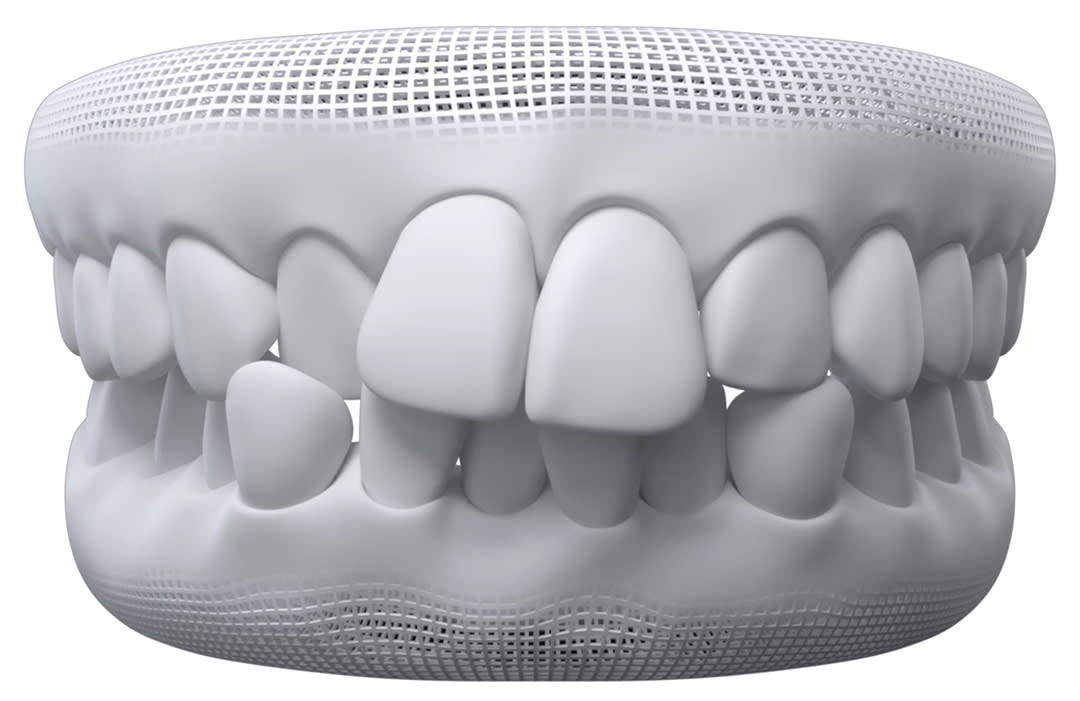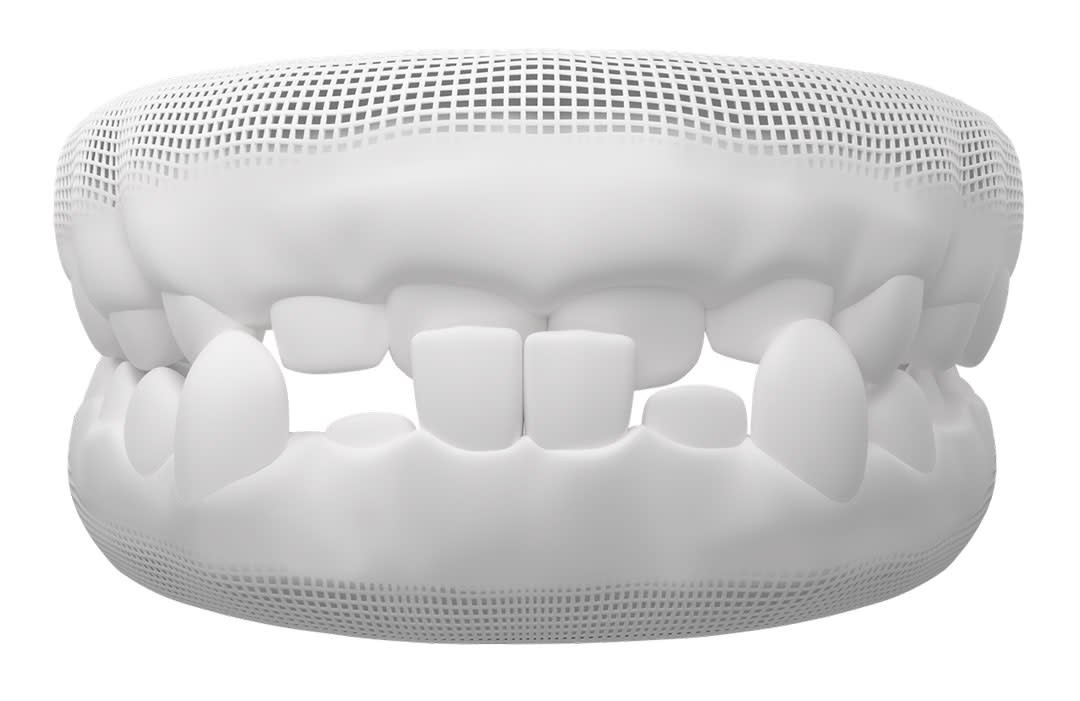Teeth crowding and how to fix crowded teeth
If you have crowded teeth, you're not alone. In fact, teeth crowding is one of the most common orthodontic problems adults faces, affecting around 24% of women and 14% of men.1 The great news is that with teeth straightening treatment such as the Invisalign® system, you could avoid overcrowded teeth complications and move forward in life with a better smile.
What is teeth crowding?
Teeth crowding is the general term used to describe teeth that are packed too tightly in the jaw. When teeth run out of space, they start pressing together and shifting in front of and behind one another, resulting in crooked or overlapping teeth. In dentistry, teeth crowding is a type of malocclusion, which means your teeth and jaw aren't aligned when you close your mouth.
Teeth crowding causes
Teeth crowding happens when your jaw is too small or narrow for your teeth or your teeth are too big to fit available space. Genetic factors are among the most frequent crowded teeth causes. However, crowded teeth can also be caused by:
Baby teeth falling out too early or too late
The improper eruption of a tooth or teeth
Having extra teeth
Past poorly-fitted dental crowns
A tumor, cleft lip or palate
Use of a pacifier after the age of three
Prolonged use of a bottle in early childhood
Extended childhood thumb sucking2
Orofacial Myofunctional Disorders3
Crowded teeth symptoms and complications
Teeth crowding symptoms and complications extend beyond aesthetics. Left untreated, the misalignment caused by crowded teeth can lead to more serious dental and health issues. Look at the top eight reasons why fixing teeth crowding is important to your health and wellbeing.
Top eight reasons why fixing crowded teeth is important
Realigning your teeth and jaw reduces overcrowded teeth pain while chewing.
Teeth crowding treatment such as the Invisalign system may help restore confidence in your smile due to straighter teeth.
Overcrowded teeth can rub each other, causing premature wear and tear.
Misalignment of the teeth may cause jaw muscle stress, leading to neck and shoulder pain.
Straightening crowded teeth makes cleaning your teeth easier, which can reduce the chances of tooth decay.
When teeth overcrowding results in crooked or overlapping teeth, it's easier for food and bacteria to get trapped between them, which can lead to gum disease.
In severe cases, overcrowded teeth can cause TMJ disorders with tenderness of the jaw and more serious overcrowded teeth pain.
Early crowded teeth treatment may reduce the need for major intervention later.
Common teeth crowding cases
Teeth crowding is a problem faced by children and adults alike. The most common types of crowded teeth include:
Mild or moderate teeth crowding
Slight rotation or misalignment of a tooth or teeth.
Front teeth crowding
Visibly overlapping or crooked front teeth crowding on the upper or lower jaw.
Single tooth crowding
A single crooked or overlapping tooth caused by baby teeth falling out too early or too late.
Severe overcrowding teeth
More severe lack of space within the dental arches which can lead to abnormal bite patterns.
Bottom teeth crowding
Visibly overlapping or crooked bottom front teeth or premolar crowding.
Available teeth crowding treatment options
Invisalign® aligners
Invisalign treatment is a popular option if you're looking to fix overcrowded teeth with clear and removable aligners. To find out if you're a good candidate for Invisalign treatment, take the Invisalign® Smile Quiz.
Traditional braces
Metal or ceramic brackets and wire fixed to upper and lower teeth can be used for fixing crowded teeth.
A custom-made wire or clear plastic device can realign crowded teeth in some cases.
In extreme crowded teeth cases, your doctor may need to create extra space using palatal expansion4 or tooth extraction. More often than not, teeth removal happens in conjunction with a teeth straightening treatment such as Invisalign aligners.
Can Invisalign aligners fix teeth crowding?
Invisalign treatment could be one of the top ways to fix overcrowded teeth, depending on your case. Start by finding an experienced Invisalign doctor near you and discuss what's causing your crowded teeth and whether you need tooth extraction before the Invisalign treatment process begins.
So, how does Invisalign treatment work for crowded teeth?
Invisalign treatment works by using a series of clear, removable plastic aligners that fit over the teeth. The aligners are customized and changed approximately every two weeks to move teeth into the desired position. Invisalign aligners have many advantages compared to traditional braces, and you can enjoy benefits such as:
Virtually clear aligners without the look of metal brackets and wires.
An indication of treatment time using your individually-mapped digital treatment plan.
A similar treatment cost to braces at some practices.
The freedom to remove your aligners and eat and drink your favorite foods without restrictions.
The results you want with less pain5 than traditional braces
Fewer doctor visits6 compared to braces.
Three easy steps to start fixing your crowded teeth
Take the Invisalign® Smile Quiz to see if you're a good candidate for Invisalign treatment.
Find an Invisalign doctor near you using our easy search tool and request an appointment with our Invisalign Smile Concierge team.
Begin the Invisalign treatment process with the world's most advanced clear aligners .7






